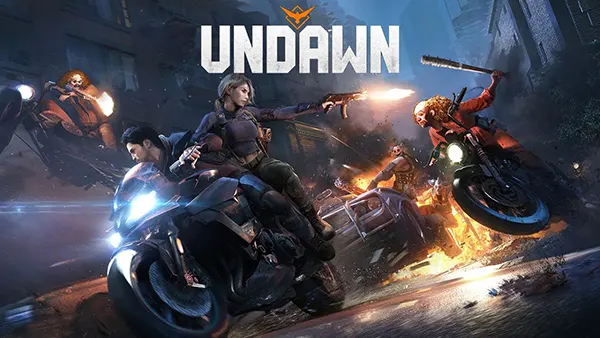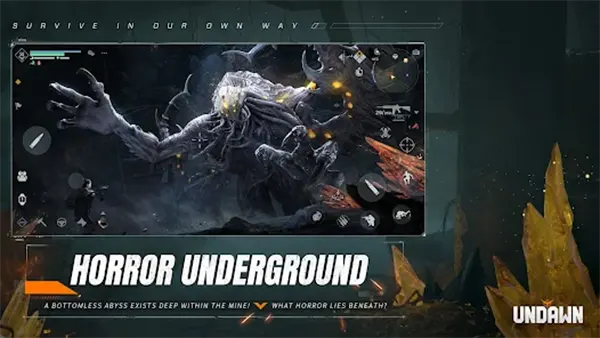
Undawn: How to Survive in an Open World — 10 PvE and PvP Tips
Undawn, developed by Lightspeed Studios and published by Level Infinite, has steadily built a solid fan base since its global release. As of June 2025, the game continues to attract players due to its deep survival mechanics, a vast open world, and competitive gameplay. Whether you prefer to explore solo, cooperate with friends, or clash against rivals in PvP, staying alive in this post-apocalyptic world requires more than just luck.
This guide shares ten up-to-date and practical survival tips to help you succeed in both PvE and PvP environments. Each strategy is grounded in current player experience, in-game updates, and the evolving metagame. By applying them, you’ll be able to extend your survival, increase your rewards, and maintain a strong position in Undawn’s unforgiving world.
Let’s break down these survival insights into key areas: environment adaptation, combat efficiency, and cooperative progression. Each section includes specific guidance for PvE and PvP scenarios to ensure your readiness, whether you’re battling the infected or other survivors.
Mastering the Environment and Resources
One of the most important aspects of Undawn’s open world is understanding the terrain and mastering resource gathering. Players must learn how to identify safe zones, supply points, and strategic shelter locations. Environments vary by weather and region, directly influencing survival rates and player stamina. In PvE, managing food and water intake while navigating biomes such as swamps and deserts is key to avoiding energy depletion.
During PvP activities, players can exploit terrain elevation or urban ruins to gain line-of-sight advantages or escape routes. Knowing the environment can mean the difference between ambush or survival. For example, rooftops offer defensive fire positions but can limit mobility, so strategic positioning is essential. Always scout before engaging, and know your exits.
Resource types differ by region, so prioritise multipurpose materials like wood, scrap metal, and food packs when inventory is limited. In PvE expeditions, farming rare minerals or fuel caches can enhance your base, while in PvP, quick access to healing items and trap components may give you an edge. Regularly update your map knowledge after game patches — layouts and resource spawns may shift.
Staying Mobile and Managing Inventory
Mobility is your primary survival tool in Undawn. Whether fleeing infected hordes or repositioning during a firefight, stamina and vehicle condition matter. Upgrade your vehicle with off-road suspension and fuel efficiency mods to cover greater distances without refuelling. Movement speed often outweighs damage output in close-quarter PvP skirmishes, especially in tight areas like the Ash Region.
Inventory management is often overlooked but essential. Carry too much and you risk slower travel and easier detection. In PvE zones, equip with harvesting tools and emergency food rations, while PvP kits should include compact ammo, medkits, and grenades. Craft lightweight versions of consumables when possible to conserve space and remain agile.
Finally, use storage lockers and your base strategically. Offload surplus loot after every run to avoid risk on your next journey. Equip based on mission type — there’s no one-size-fits-all setup. Custom loadouts, introduced in the March 2025 update, allow quick switches between PvE and PvP gear profiles, greatly improving readiness.
Enhancing Combat Performance
Combat in Undawn rewards tactical precision over brute force. In PvE, understanding enemy AI behaviour is vital. Infected enemies now exhibit varied aggression levels and pack dynamics, especially after the April 2025 AI overhaul. Use distractions like noise traps or drones to separate and pick off targets. Always clear small zones methodically to avoid alerting larger swarms.
In PvP, the current meta (as of Season 8) favours semi-automatic rifles and burst-fire SMGs for mid-range combat. Learn to pre-aim corners and lead shots based on lag compensation, especially in urban PvP maps like Deadwater Outpost. Practice weapon recoil patterns in safe zones before heading into active regions to improve control during real engagements.
Armour plays a larger role now than it did at launch. The 2025 seasonal update introduced ballistic grading, making it crucial to match your gear with the threat level. Heavy armour helps in PvE tank roles, while lightweight vests offer mobility for PvP ambushers. Don’t ignore attachments — stabilisers and scopes can dramatically change weapon viability.
Using Skills and Specialisations
Skill trees in Undawn have grown significantly through updates, offering deeper customisation. For PvE, invest in survival and engineering branches to reduce crafting time, enhance base durability, and increase healing effectiveness. Skills like “Silent Gatherer” help with stealth looting, reducing enemy aggro radius.
PvP players often specialise in combat-oriented trees such as Sharpshooter or Raider. As of June 2025, meta-favoured perks include increased reload speed, reduced visibility while prone, and bonus damage against armoured foes. Respec tokens, now more available through weekly missions, make it easier to adapt your build without grinding from scratch.
Don’t forget cooperative skills that benefit the group. In both PvE raids and PvP base assaults, buffs like “Quick Deploy” or “Shared Shield” can determine team survival. Assign roles in your group before entering combat zones to maximise your specialisation synergy and avoid overlapping abilities.

Building Your Base and Surviving Long-Term
Your base is not just a shelter — it’s your resource hub, respawn point, and defensive outpost. Invest in structural upgrades to weather storms, repel NPC raids, and store materials. Post-May 2025 patch, raiders now utilise ladders and breaching tools, so wall integrity and turret placement have become critical. Rotate watchtowers and defensive zones weekly to prevent predictability.
Power management is vital. Install renewable generators and manage battery outputs wisely. Players now compete for solar cells and fuel, especially during regional shortages. In PvE, downtime due to poor base planning can result in lost resources, while in PvP, base vulnerability invites hostile attacks from factions looking to loot your stockpile.
Farming and production stations have been rebalanced for 2025. Hydroponic systems produce double the crops compared to standard farms and are less vulnerable to decay. Focus on producing high-yield food and medicine. Store excess in faction depots and exchange them for rare upgrades or ammunition during merchant events.
Cooperation and Faction Strategy
Joining an active faction increases your survival odds dramatically. Coordinate PvE raid missions and PvP base defences more efficiently with scheduled events and shared gear pools. As of June 2025, top factions receive priority access to the weekly loot zones and rare boss drops, offering exclusive items not available elsewhere.
Faction diplomacy has become more important. The game’s latest update introduced dynamic alliances and sabotage mechanics. Forming temporary truces can allow safe exploration or coordinated attacks on mutual enemies. Use in-game chat and voice to manage your relationships — faction betrayal penalties are now harsher, including gear lockouts for 48 hours.
Lastly, consider training new recruits. Most factions have mentoring programs that grant both XP boosts and gear bonuses to mentors and trainees. This not only strengthens your group long-term but builds a more skilled player base across your server. Leadership roles now offer strategic bonuses in PvE defence and PvP assault operations.
